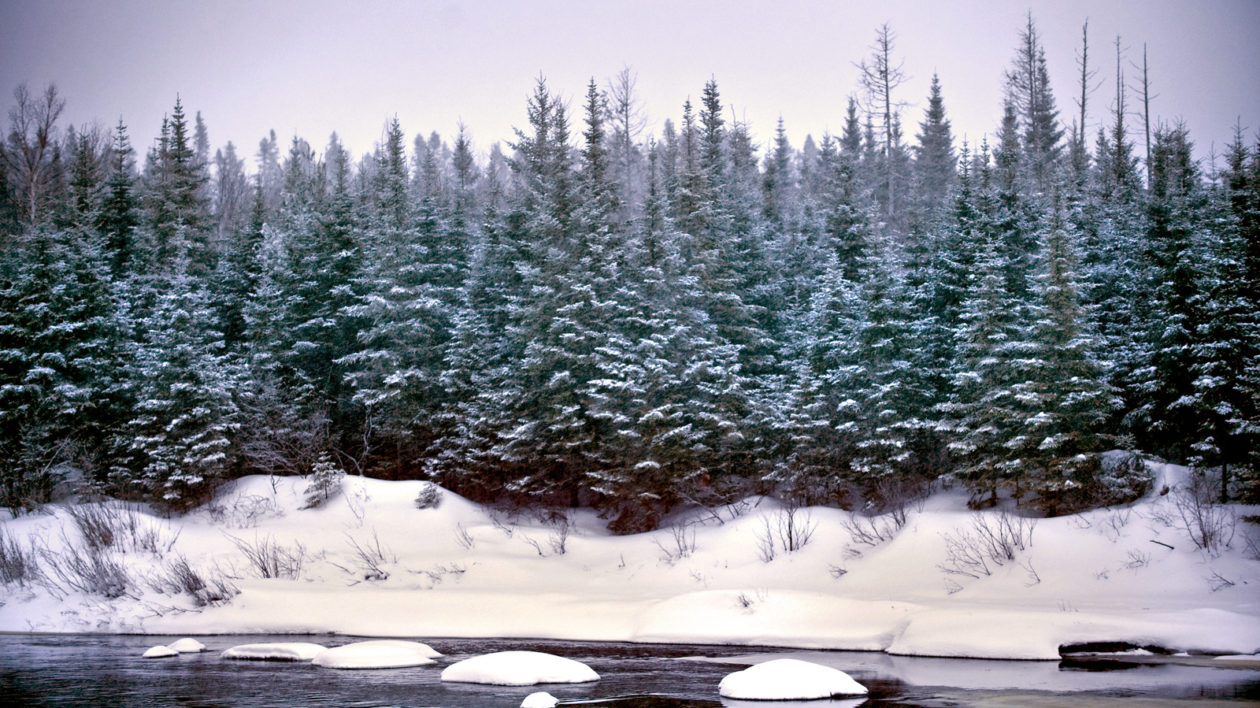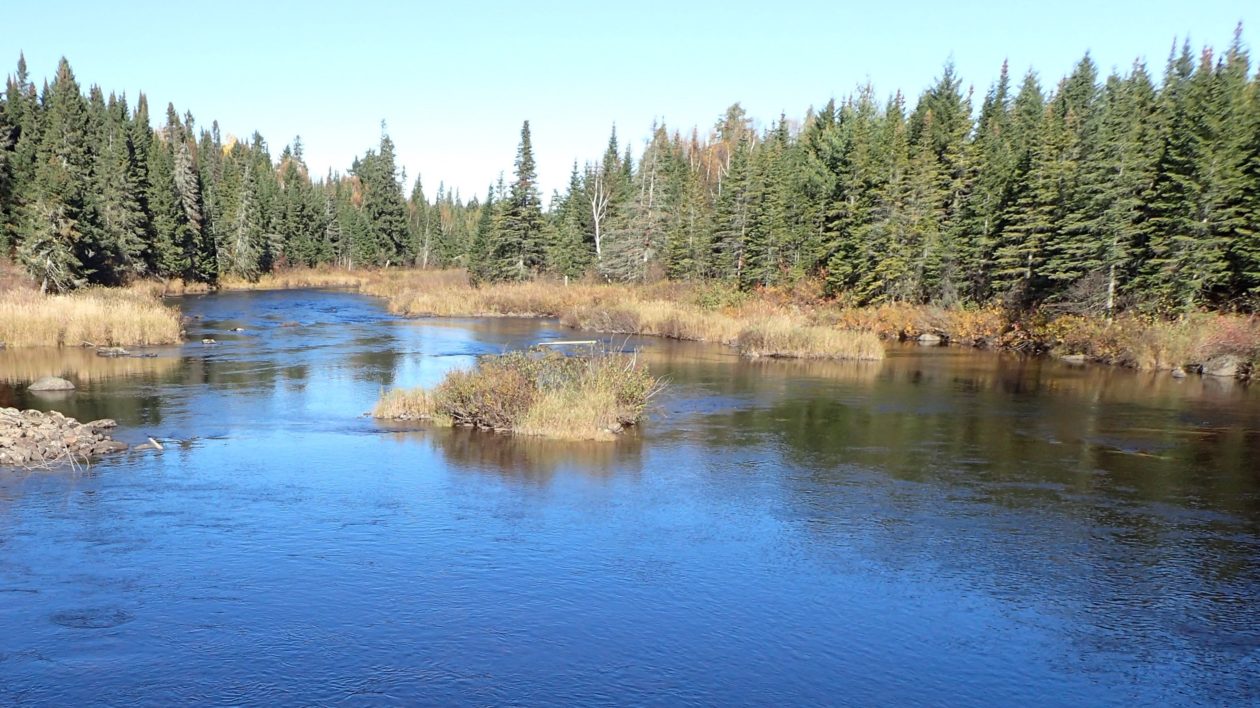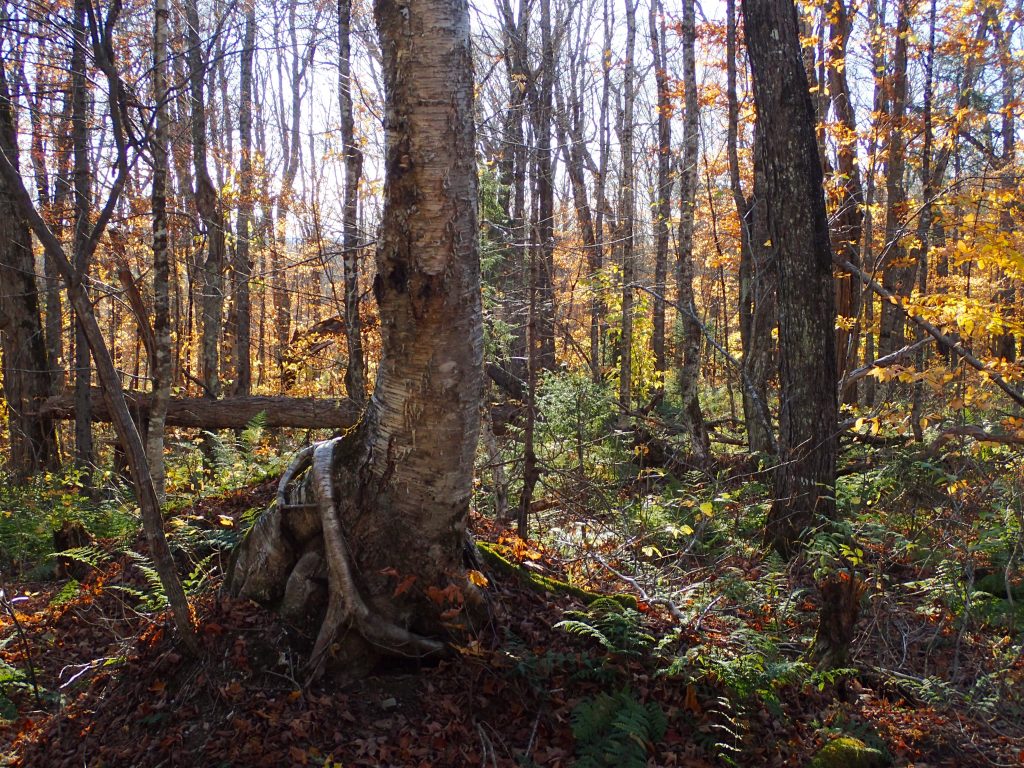For many years, the economic value of private forestland could be summed up in one word: Timberrrrr!
Many forest owners, large and small, now seek to diversify revenue streams for their forests. Some of these activities (like outdoor recreation and producing maple syrup) are compatible or even benefit conservation. Other activities, such as selling lands for housing development, are much less so. And harvesting timber remains a major economic activity on forestlands across North America.
In Maine, a large Nature Conservancy property along the Upper St. John River is now demonstrating another way to diversify revenue streams on private forestland: storing carbon. The funds generated will enable more sustainable forestry practices while also helping to address climate change.
“The decisions made by landowners are the biggest factor influencing the future of private forests in Maine and other parts of the country,” says Mark Berry, The Nature Conservancy’s Maine forest program director. “Our forest carbon project showcases another option for landowners, one that can provide revenue to ensure these forestlands remain forestlands.”
A Forest Laboratory
The Nature Conservancy purchased 185,000 acres along the upper St. John River from International Paper twenty years ago. As is the case when the Conservancy acquires property, the goal was not just to set it aside from development. The property was to become a forest laboratory, a place where sustainable forestry practices could be demonstrated and researched.
Active harvesting remained a part of the Conservancy’s management, although the methods were often different than when the lands were managed as industrial forest. Some areas, including stands of old trees, were identified as reserves where no logging took place. The Conservancy achieved Forest Stewardship Council (FSC) certification on the land.
Recently, the Conservancy added maple syrup production. More than 10,000 taps were operated in 2018, with a sugarhouse constructed this year and the number of taps expected to exceed 60,000 within two years.
“The maple syrup production allows us to maintain mature sugar maples on the property,” says Berry. “But it’s also another way to diversify our revenue. We recognize that we need to explore revenue streams that allow us to reach our stewardship and management goals.”
Like forest carbon markets.

Carbon Storage and Sustainable Forestry
Last year, The Nature Conservancy officially added carbon offsets to its sustainable forest management on the upper St. John River project. A forest carbon project involves a landowner making a long-term commitment to store carbon on their property, with rigorous inventory, verification, and monitoring.
A “forest carbon offset” is a metric ton of carbon dioxide equivalent (CO2e)—the emission of which is avoided or newly stored—that is purchased by greenhouse gas emitters to compensate for emissions occurring elsewhere. This market-driven approach provides a natural way to capture CO2 from the air while creating financial incentives for polluters to reduce their emissions, and landowners to manage for carbon storage.
The project involves a ten-year agreement with Climate Trust Capital, a U.S.-based private investment fund and an independent entity of the long-standing nonprofit The Climate Trust. Climate Trust Capital is assisting The Nature Conservancy in developing the forest carbon project, including providing technical services, and selling carbon offsets on a cap-and-trade market set up by California and Canadian provinces known as the Western Climate Initiative.

“This commitment is long term and will be monitored with scientific rigor,” says Berry, noting that landowners participating in forest carbon markets are obligated to report annually, and are subject to a third-party verification every six years.
Berry notes that timber harvest will not end on the property but will be decreased significantly. “There will be thinning and stand improvement to foster growth that sequesters more carbon,” he says. “This project allows us to blend management for timber, carbon and other forest values.”
The revenues from the carbon project will immediately be used to fund further stewardship of the property. Additionally, the Conservancy plans to leverage funds to advance renewable energy projects and potentially other forest acquisitions in the state.
“Forest stewardship can be a natural climate solution,” says Berry. “The revenue can also help us achieve our broader conservation goals. We are demonstrating that forest carbon markets are compatible with any landowner who has an interest in a healthy, well-stocked forest.”

According to a recent book by Charles Fergus, “more than half the forestland in the United States – some 441 million acres, most of it in the East” – is owned and managed by 11 million private ownerships.”
However, many of those forests consist of small properties owned by individuals or families. “One of the challenges of carbon markets has been that it’s most feasible for larger properties,” says Berry. “But as we learn more, there may be opportunities for this to be available for smaller landowners, perhaps by adjacent properties working together.”
In the meantime, the goal of the upper St. John Project is to share lessons learned and results with scientists, other conservation groups, public agencies and private landowners.
“Unsustainable forest management can have negative impacts on climate change, but we’re showing it doesn’t have to be that way,” says Berry. “Natural climate solutions are compatible with a variety of other forest uses. We want our ownership of the upper St. John forest to be a lab for innovation, one that can show a positive future for stewardship and for making a difference for climate change.”




Very interesting and useful article. I was wondering about levels of carbon storage (in soil and above ground) in your 185,000 acres lab? I would also be interested to understand of the carbon “forest carbon offset” is measured?
Many thanks,
Errol
I enjoyed reading about the Nature Conservancy effort to protect our forests and by so doing reduce the effect of carbon emissions on climate change. Not enough is said about the effect of deforestation on climate change other then those that deny that it does. Those that study the history of climate change are aware climate change is an on going process and there are many factors that contribute to it. One example is a dramatic climate change during the Eocene when the range of rainforests decreased while that of grasslands increased and Eohippus or dawn horse. an inhabitant of the rainforest evolved over time into the modern horse a grassland inhabitant.
GOOD FOREST GREENERY ALSO HELPS TO RELEASE OXYGEN. WISH TO SUGGEST THAT REDUCING NIGHT TIME EMISSIONS OF CARBON DIOXIDE EVEN IF DAY EXHAUSTS ARE MORE, AS THE PLANTS ARE HELPLESS TO ABSORB CARBON&RELEASE OXYGEN W/O SUNLIGHT. IF HEAT&GAS EXHAUSTS ARE REDUCED DURING NIGHTS &CONTROL VEHICULAR TRANSPORTS,IT WILL HELP THE NATURAL WIND MOVEMENTS&HELP IN KEEPING THE EQUILIBRIUM OF SUN,SEA,LAND WITH REFERENCE TO ATMOSPHERE. {IF NIGHT TIME TEMPERATURE OVER LAND IS EQUAL OR MORE THAN THAT OVER SEA NATURAL WIND FLOW WILL BE HAMPERED}&THE DILUTION OF POLLUTANTS AS ATMOSPHERIC AREA OF SEA IS MUCH MORE, WILL NOT BE UTILISED.
GO Maine! We “expats” (I’m a ‘Mainer’ in Utah) appreciate what you’re doing with forestry. My Dad owned a 40 A woodlot in West Falmouth that he ‘preserved’ as a contribution to the overall conservation of Maine forests.
Thanks for your comment, and for your family’s contribution to forest conservation in Maine! The decisions of every landowner are important in the context of climate change, and smaller properties close to communities have their own conservation values.
Is there a “best” species of tree to plant to absorb CO2? I’d like to plant up to 25 acres of open land near Albany, NY. Thanks for any suggestions.